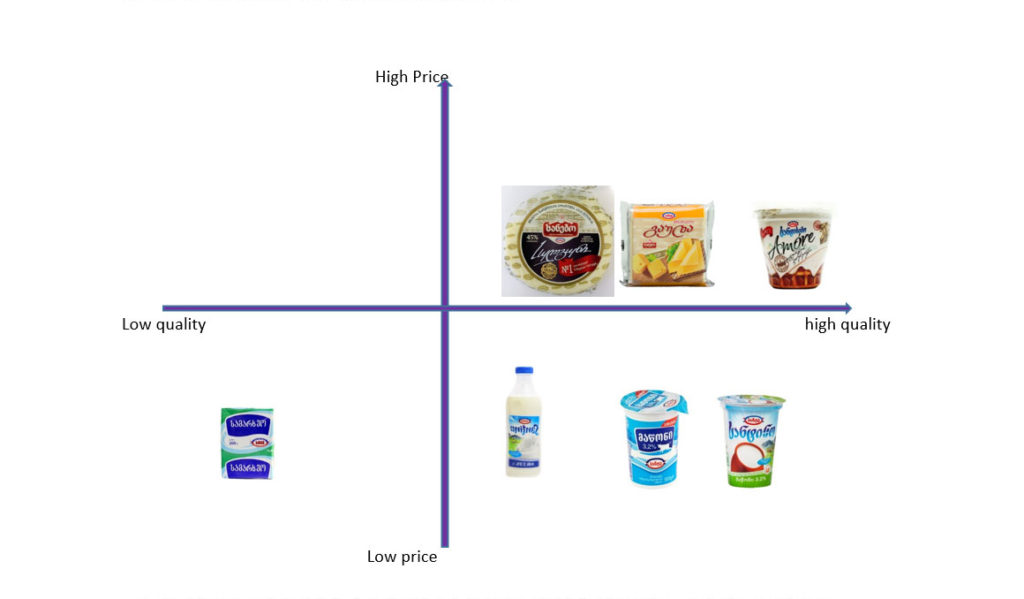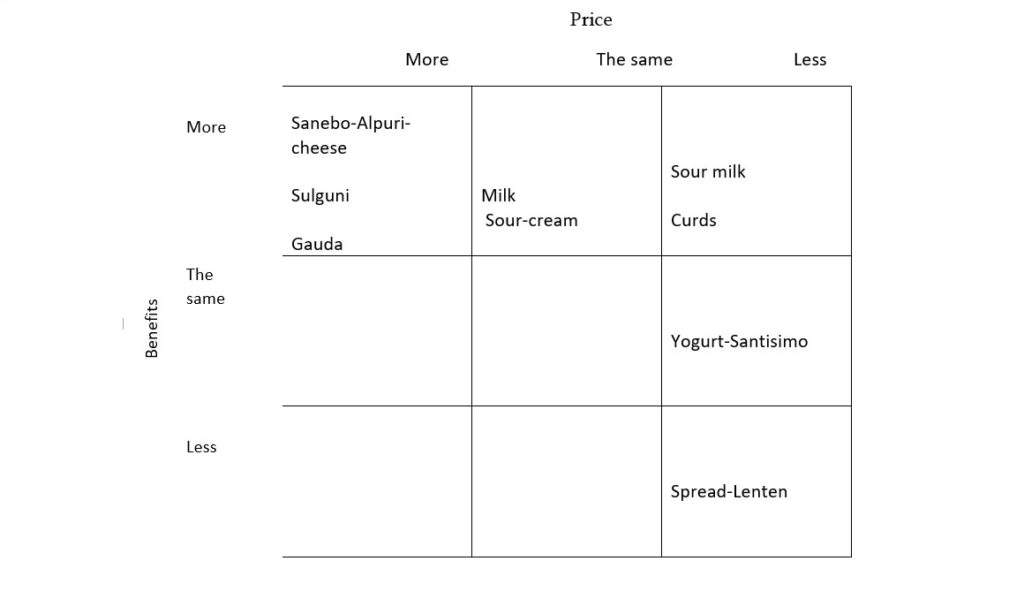
Company SANTE
Anna Ghvaladze
Glocal marketing is a term that combines “global” and “local” marketing. Global brands use this strategy to adapt to local needs. Glocal companies aim to maintain global brand messaging and adapt to the needs of the local culture. Therefore, it is the most important task for them to adapt their message to different products, services, or experiences that better suit the local culture. For example, Sante’s goal is to introduce the highest standards in production and create the highest quality products that will be a benchmark for the public in the dairy industry. Their goal also is to preserve the brand message of simple and affordable dairy products. Therefore, their products suits local people’s needs and wants. So this means that Sante is glocal company. Glocal businesses draw the line between the universal appeal of a “global” brand and the intimate experiences between local businesses and their customers. In other words, the concept assumes that in order to be a great “global” brand, a company must also be a compelling local company.
Sante exports its products in European market. Companies that operate on international levels ought to examine the cultural and consumption habits of the target country to enhance their marketing mix components (product, price, distribution and promotion). As for the distribution strategies, it will be beneficial and influential to examine the consumers’ cultural background. The consumer led marketing research into local cultural systems will bring far more clarity as how a marketing mix program should look like to influence local country nationals. This is how a successful glocal marketing program is initiated. Another aspect is that the style of glocal product for host country markets. Sante meet customer expectations in this way.
Targeting in marketing is a strategy that breaks a large market into smaller segments to consider a particular group of consumers within that audience. It defines a segment of customers based on their distinctive characteristics and focuses entirely on serving them. Instead of attempting to reach an entire market, a brand uses target marketing to place their energy into connecting with a specific, defined group within that market. There are four main types of market segmentation, which I have already discussed in the research:
- Demographic segmentation: age, gender, education, marital status, race, religion, etc.
- Psychographic segmentation: values, beliefs, interests, personality, lifestyle, etc.
- Behavioral segmentation: purchasing or spending habits, user status, brand interactions, etc.
- Geographic Areas: neighborhood, area code, city, region, country, etc.
The positioning map is a visual description of what your target market thinks about your product. This data must be obtained through market research and is often presented as a high quality to low quality, high price to low price scale.

The full positioning of a brand is called the brand’s value proposition—the full mixture of benefits on which a brand is differentiated and positioned. It is the answer to the customer’s question “Why should I purchase your product?” In value proposition, we discuss the five winning value propositions: more for more, more for the same, the same for less, less for much less, and more for less. The first possible value proposition is the more-for-more proposition. A brand that selects this proposition will be able to justify a higher price by providing customers with a higher level of benefits in their brand or product. The more-for-the-same proposition is often used to boost a company’s position above that of their competitor. Customers are drawn to the company that provides the lower price and still offers the same product because they do not have to sacrifice the high quality they desire for a higher price. The last proposition to provide more benefit to the consumer is the more-for-less proposition. This proposition is the most enticing for consumers, but hardest to achieve for companies because it does not promote sustainability. The next value proposition is the-same-for-less proposition, which offers the same quality of products but at a lower price than most of its competitors. Last, but not least, is the less-for-much-less value proposition. Although this proposition offers the customers less benefits in their products, they are also incurring less costs and can therefor charge the customer lower prices. Sante has strong marketing, which makes Sante a leading company in the Georgian dairy market today. The company maintains a correlation of price and functional characteristics, which allow it to be prepared for the threat posed by the substitutes.

Customer- driven marketing strategy begins with choosing which customers to serve and determining a value proposition that best serves the targeted customers. The four steps include: market segmentation – the act of dividing a market into distinct segments of consumers with totally different needs, characteristics, or behaviors who may need separate merchandise or marketing mixes; market targeting -evaluates every market segment’s attractiveness and selects one or a lot of segments to serve; Differentiation- involves truly differentiating the market providing to form superior customer value; Positioning -consists of positioning the market offering in the minds of target customers. A customer-driven marketing strategy seeks to build the proper relationships with the right customers. There is no single way to segment a market. For consumer marketing, the major segmentation variables are geographic, demographic, psychographic, and behavioral. Business marketers use several of similar variables to segment their markets. Business markets may be segmented by business demographics, operating characteristics, purchasing approaches, situational factors and personal characteristics.
To target the best market segments, the company first evaluates each segments size and growth characteristics, structural attractiveness, and compatibility with company objectives and resources. After evaluate the different segments, firms decide one or more segments to enter. A target market consists of “a set of buyers who share common needs & characteristics”. It has also some several different levels. These are undifferentiated marketing, differentiated marketing, concentrated marketing, micro marketing.





